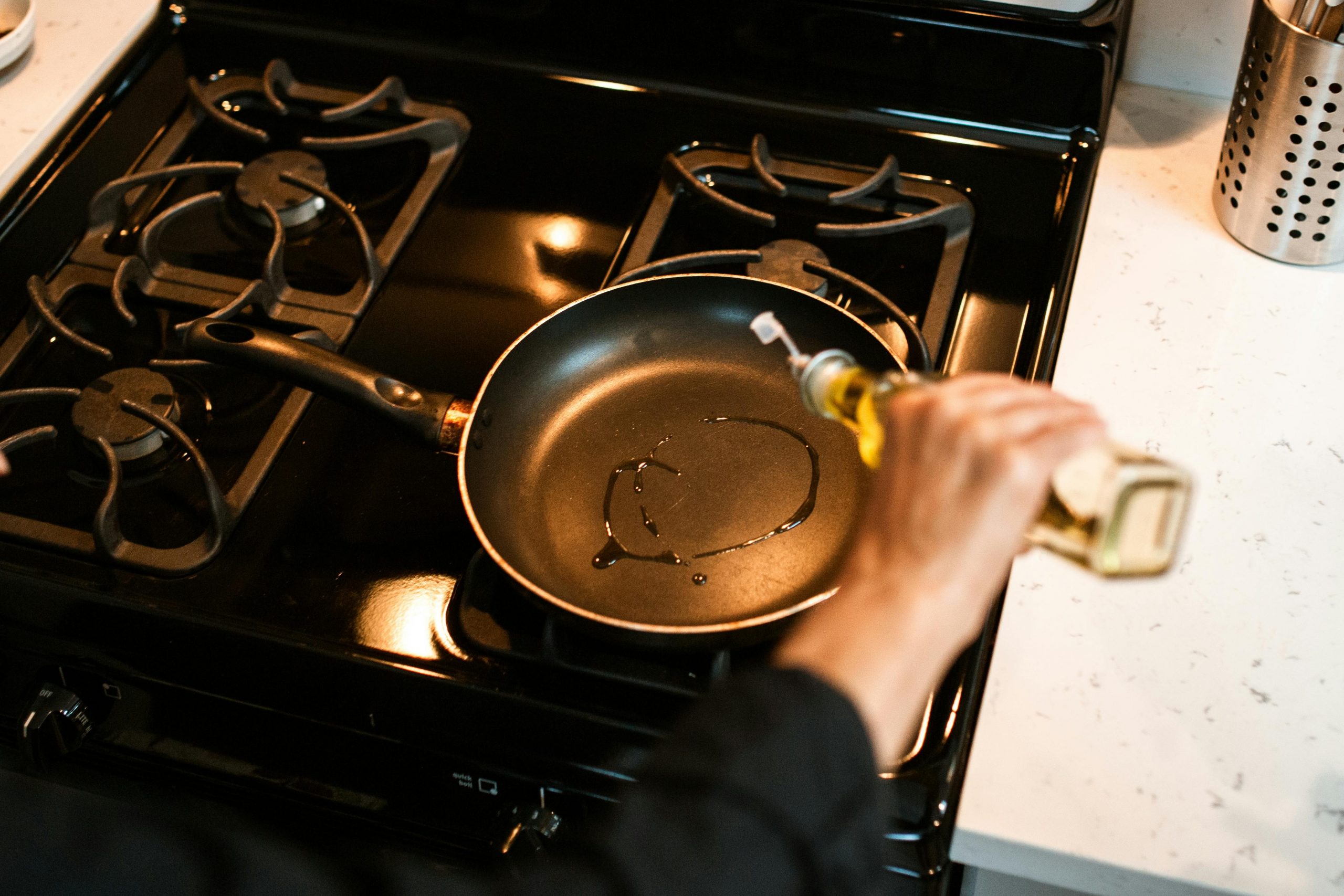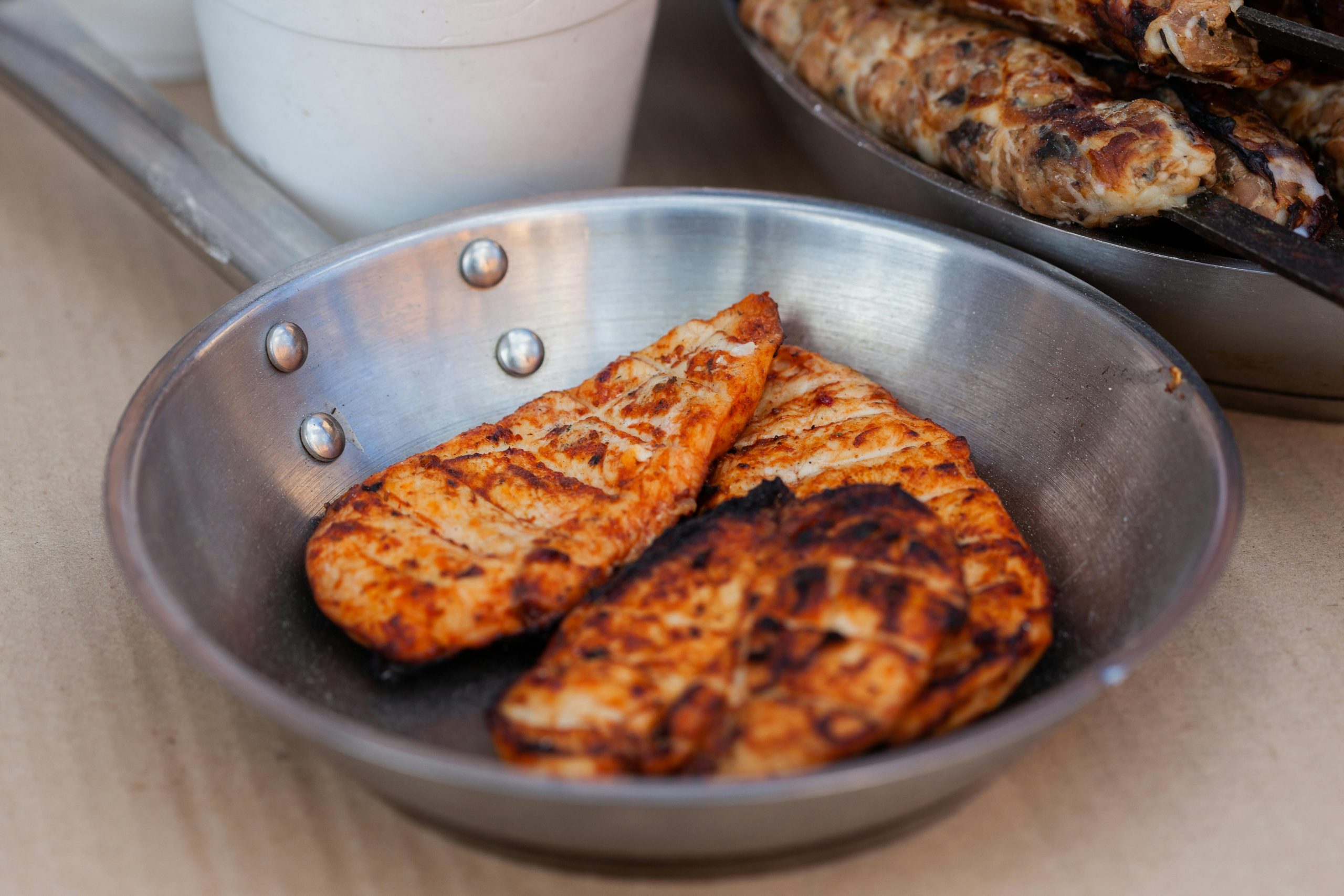Shopping for cookware can be an overwhelming task. With so many options available, it can make you dizzy. People often wonder whether they should opt for nonstick pans or regular, uncoated stainless steel pans. There’s much to consider when selecting your new pan, so it’s a good idea to understand the pros and cons of both varieties. It’s mostly a matter of personal preference and budget, but mostly which foods you like cooking most.
We’ve laid out the pros and cons for each, so you can come up with your own conclusions.
Nonstick pans

Nonstick pans, traditional or ceramic, are finished with a manmade coating, commonly referred to as Teflon. The slick coating prevents food from sticking and is easy to clean after dinner. If you’re a health-conscious cook, you’ll be happy to hear that nonstick pans need less oil or fat than a uncoated pan. However, the helpful cooking surface poses a few concerns. If pans are heated and kept at high temperatures, their nonstick coating may leach chemicals into your food. Additionally, if a metal utensil is used, it scratches the coating and opens it up to more heat damage and chemical leaching risk.
Overall, nonstick pans remain one of the most affordable pans on the market, get the job done, and are popular among home cooks, even though they pose high risks if not maintained properly, and are not durable.
Pros & cons
- Pros: easy cleanup, ideal for low-fat cooking, prevents sticking
- Cons: Can’t handle high heats, coatings wear off or chip over a few years, not always oven-safe, high risk of leaching chemicals (like Teflon and PFOA)
Best uses
- Frying eggs
- Pancakes
- Cooking delicate foods
Stainless steel pans

Stainless steel pans are a favourite among professional chefs. They’re responsive to temperature changes, evenly circulate heat, and produce that sought-after browning of foods (aka the Maillard reaction). High-quality stainless steel pans are made by layering stainless steel with other metals like aluminium and ferritic 403, making them extremely durable cookware with superior heat distribution. As long as their handles are made with heatproof materials, they’re usually oven-safe.
The only trick to stainless steel pans is making them non-stick during cooking. With the right heat and amount of oil or fat, it will feel like cooking with a nonstick pan.
Pros & cons
- Pros: Durable, oven-safe, handles high heat, uses any utensil (metal, silicone, or wood), and is versatile
- Cons: Foods can get stuck or burn on without proper technique, and require more care and oil
Best uses
- Searing proteins
- Browning foods
- Deglazing sauces
How do they compare
When it comes to versatility, durability, heat distribution, and flavour, stainless steel pans take the lead. They’re perfect for searing, browning, and cooking dishes evenly, but they do require practice and consistent maintenance to prevent sticking.
Nonstick pans, on the other hand, are all about convenience. They’re easy to clean, ideal for low-fat cooking, and great for delicate foods like eggs and pancakes. However, they won’t give you the same sear on a steak or the even cook on an omelette that stainless steel can.
Your choice comes down to your skill level, cooking style, and budget, and there’s no wrong answer when you pick the right pan for the job.

